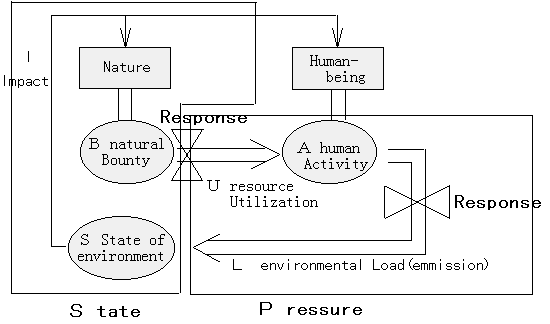
5. Environmental Basic Indicator(EBI)
5.1 purpose
Environmental Basic Indicator (EBI) is developed for the use of evaluating local environmental performance. Local governments can know how their own city is placed and characterized in all cities, issues, and past years.
EA Japan intends to use it as basic information when local authorities establish environmental comprehensive plan.
5.2 basic frame
-Representing almost all fields of environmental policies through a few indicators-
EBI covers the fields of environmental policies as widely as possible. However EBI consists of a few representative indicators.
-Developing gIndicatorsh, not gIndicesh-
We often use comprehensive indices to cover most fields with a few items, but EBI doesnft aggregate; it consists of a core set we call gindicatorsh. In other words, EBI provides an overview of environmental performance.
-Adopting Pressure -State -Response approach-
EBI does not include only gstateh indicators which is the traditional approach, but also gpressureh and hresponseh indicators. PSR framework is adopted by OECD and many countries. EBI adopted gimprovedh Pressure-State-Response approach, pressure is divided three sections gresource Utilizationh and gActivity, and gEnvironmental Loadh, states are divided into three sections; gImpacth, hStateh, hNatural Bountyh.

-Developed as easily as possible by using available data-
EBI should not require new examinations and measurements. Also, EBI should not adopt complicated methodology to estimate values. EBI should be developed continuously with minimal processing by using available data.
-Represented by per capita and other units if necessary-
EBI is presented by standardized units for comparing with other items and cities. But we sometimes hove to choose total values. So we prepared both total values and per unit values.
@
@
5.3 content
We chose approximately 25 indicators for EBI(table 6).
Table 6 Component of EBI
